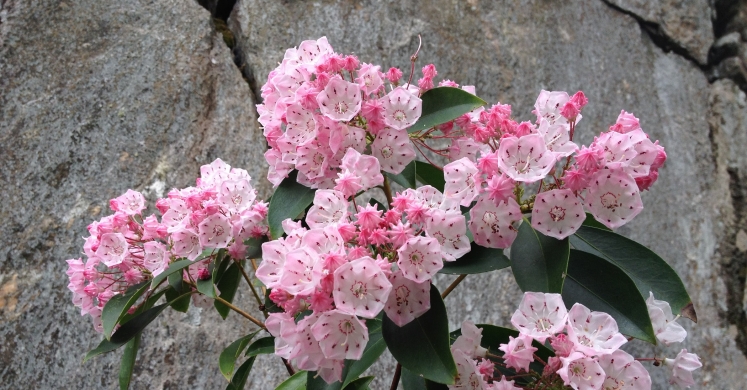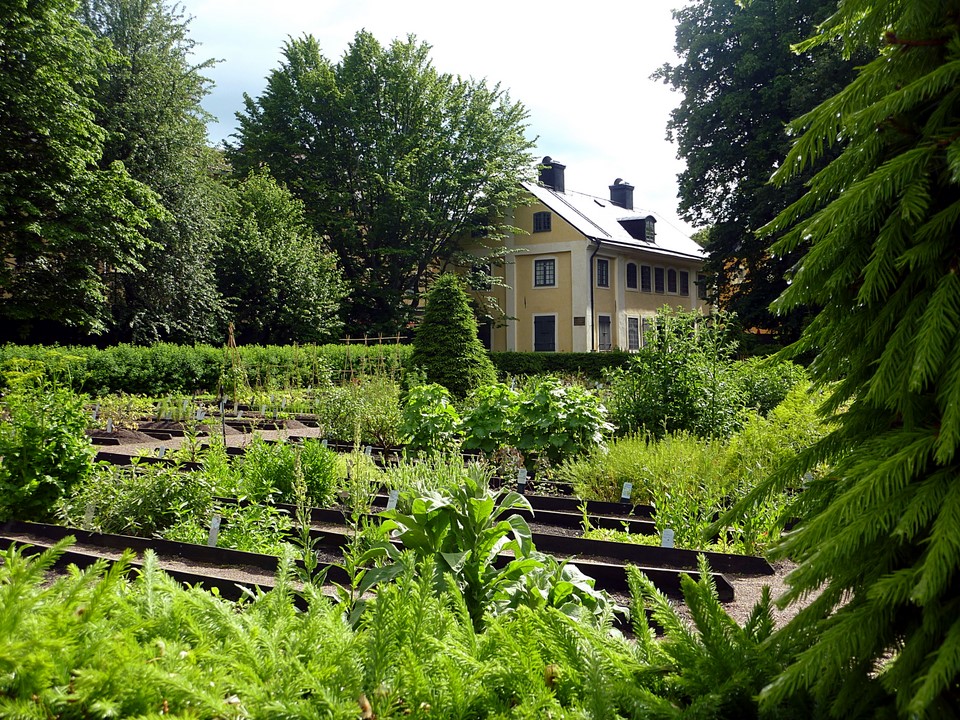Blog

#bioPGH Blog: What’s in a Name?
 A resource of Biophilia: Pittsburgh, #bioPGH is a weekly blog and social media series that aims to encourage both children and adults to reconnect with nature and enjoy what each of our distinctive seasons has to offer.
A resource of Biophilia: Pittsburgh, #bioPGH is a weekly blog and social media series that aims to encourage both children and adults to reconnect with nature and enjoy what each of our distinctive seasons has to offer.
It was late evening in summer in the mid-eighteenth century, but the sun was still high in the sky over the bustling city of Uppsala in Sweden, a city already more than five hundred years old. Not far from Uppsala’s famed university, a comfortable yellow house sat along the narrow streets of the city. In the upstairs study of this house, a man in his forties sat at his wooden desk—carefully studying the pressed specimen of a beautiful flower from North America. As he decided this new flower’s scientific name, Kalmia latifolia, he acknowledged his student Pehr Kalm, who had sent it from so far away. Today, almost 270 years later, we in Pennsylvania still know and love this same species as our state flower—the mountain laurel. And all around the world, the scientific community still holds the utmost respect for the man who described and named it—Carl Linnaeus.

The Linnaeus Museum in Uppsala, Sweden - the former home and garden of Carl Linnaeus.
This exact moment when Linnaeus first studied mountain laurel in his Uppsala home may be imagined, but Linnaeus’s contribution to botany, zoology, and taxonomy most certainly is not. During his lifetime (1707-1778), Linnaeus wrote over 70 books and 300 scientific papers on natural history and medicine, and he revolutionized the way we classify living organisms into groups—which why he is often referred to as the father of taxonomy, the study of classifying or categorizing organisms. His work was an inspiration to countless naturalists, including the originator of the biophilia movement, E.O. Wilson.
Linnaeus’ work of classifying species is paramount to understanding ecology, species interactions, conservation, and many other fields of study. Classifying organisms helps us learn more about the individual species within the groups, and a basic catalogue of the Earth’s biota is essential for maintaining biodiversity. Many related species share similar characteristics, and can help scientists ask research questions. A scientific name is also useful when studying an organism that has regional common names. If we go back to the mountain laurel, we can find its two other common names: the calico bush and the spoonwood. Yet no matter where a scientist may be from, the scientific name will always be Kalmia latifolia. On a recreational level, understanding classification can help someone use guide books, as most of them are organized taxonomically.
Linnaeus’ taxonomic work may be centuries old, but we all are at least somewhat familiar with it, in particular the binomial nomenclature system that Linnaeus made into standard practice. This is the naming system that uses two Latin names, the genus and specific epithet, to refer to an organism. Perhaps not all of us regularly use the phrase “binomial nomenclature,” but we have definitely used the naming system if we have ever used a scientific name: Homo sapien (human), Quercus rubra (red oak), Leucanthemum vulgare (oxeye daisy), or Felis catus (domestic house cat.) In all of these cases, the first word in the name is the genus (a taxonomic grouping) and the second word is the specific epithet (the specific member of the genus.)
Linnaeus’ other great achievement was to create and popularize the use of a hierarchical system to categorize living organisms. Though the world of taxonomy has shifted significantly since his day, his original prominent groups are still familiar to us today: kingdom, classes, orders, genera, and species. Each grouping—starting with broad kingdoms—becomes more specialized than the level before, until you have the genera (singular: genus), groups made of very similar organisms, and finally the species—a single kind of organism. *N.b., if you are familiar with modern taxonomy, notably absent from Linnaeus’ original 1735 hierarchy were domains, phyla, and families. He also only included three possible kingdoms for all of life: animal, plant, or mineral.
So to ask an often rhetorical question, what is in a name? Well, in biology, the name includes everything!
Connecting to the Outdoors Tip: You can start learning about the relationships between organisms and their classifications easily from home. As we discussed earlier, most guide books are organized taxonomically, and many will describe the groupings in the beginning of each section of the book—to take a guide book with you and start exploring! Also, the National Center for Biotechnology Information, a part of the NIH, has a database of over 160,000 species and their full lineages that anyone can explore. The University of British Columbia also has a helpful introduction to taxonomy and classification online.
Biophilia Around the World: It would make sense that Linnaeus was an influence on E.O. Wilson, who founded the biophilia movement. Even today, the curators of the Linnaeus Museum in Uppsala Sweden have a chance to connect with nature through his work. “Every time I learn something new from Linnaeus’ teaching or his publications, it opens my eyes to see the wonders of nature more clearly,” says Dr. Mariette Manktelow, the vice president of the Swedish Linnaeus Society. “Linnaeus is the founder of botany and zoology, and therewith biology in its broad sense as we know it today.”
Continue the Conversation: Share your nature discoveries with our community by posting to Twitter and Instagram with hashtag #bioPGH, and R.S.V.P. to attend our next Biophilia: Pittsburgh meeting.
Resources
Caroli Linnæi (Latinized Carl Linnaeus), Systema Naturae – 1758 edition
The E. O. Wilson Foundation—The Case for Protecting Half the Earth in Its Natural Condition
Convention on Biological Diversity—The Linnaean Lecture Series
Virginia Native Plant Society—Mountain Laureal
Encyclopedia of Life –Mountain Laurel
U.C. Berkeley: Understanding Evolution— Nested Hierarchies, the Order of Nature: Carolus Linnaeus
The Swedish Linnaeus Society—About Linnaeus
Photo Credits: Niko Lipsanen (CC-BY-4.0), Wikimedia user Fritz Flohr Reynolds (CC-BY-SA-3.0), and Biodiversity Heritage Library (public domain)

